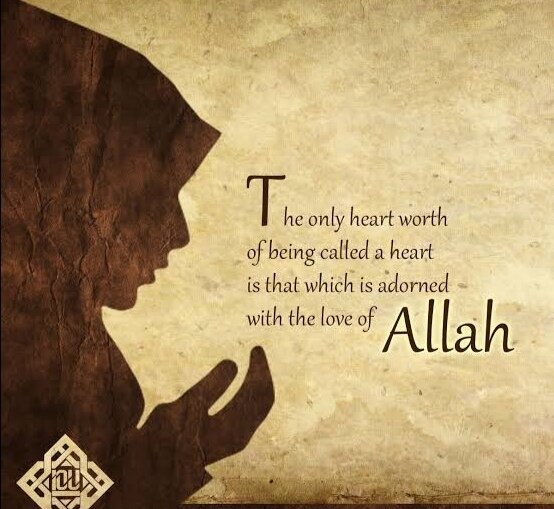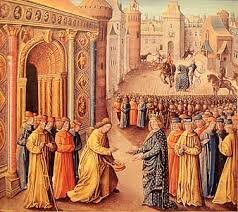A. Introduction
Chandragupta-I
- First important king of Gupta dynasty.
- The Gupta era began in 319–320 AD.
- It enhanced his power and prestige by marrying Kumar Devi, the princess of the Lichchavi clan of Nepal.
- He acquired the title of Maharajadhiraja.
- He carried coins in the joint names of himself, his queen and the Lichchavi nation so that his marriage could be accepted by the alliance.
Samudragupta

- The Gupta empire was greatly extended by Chandragupta’s letter and successor Samudragupta.
- His court poet Harisen wrote an emerging account of his patron’s military exploits. In a long inscription (in Allahabad) on the Prayag Commendation Pillar, the poet told the people and the countries that were victorious by Samudragupta.
- Samudragupta believed in the policy of war and conquest and because of his bravery and tactical skills, he (by historian V.A. Smith) has been called the ‘Napoleon’ of India.
- Samudragupta has also been called the author of many poems of high merit. Some of his coins show him playing a bean. He also performed the Ashwamedha sacrifice.
- He was also given the titles of Kaviraj and Vikramanka.
- He was imperfect of Brahmin religion. But he also believed in other religions, he asked Meghvarman, the ruler of Sri Lanka, In which he accepted his permission to build a Buddhist temple in Gaya, which he accepted.
Chandragupta-II
- Samudragupta took over the reign after Ramgupta but Chandragupta II killed him and married his queen Dhravadevi.
- She married and married the princess Kubernaga to the Nagas (of the Upper and Central Provinces), whose daughter Prabhavati married Rudrasen-II of the Vakatak family.
- He achieved the title of Vikramaditya by defeating Rudrasimha Tatiya, a Kshatrap king of Ujjain.
- He was the first ruler to issue silver coins. He also issued copper coins in addition.
- The inscription of an iron pillar near the Qutub Minar in Delhi mentions a king Chandra (considered by many to be Chandragupta II).
- His court was adorned with nine ratno (navaratnas), including Kalidasa, Amarsingh, Varahamir and Dhanavatari.
- Chinese pilgrim Fahen visited India at this time.
Kumaragupta-I
- He adopted the title of Mahendraditya.
- He founded Nalanda University (which was a famous university of ancient India).
- He used to worship Lord Kartikeya (son of Lord Shiva).
- In the last years of his reign, the peace and prosperity of the empire came to an end due to the invasion of the Turks-Mongol tribe by the Huns. During the war with the Hunas, Kumaragupta died.
Skandagupta
- After Kumaragupta-I, Skandagupta took over the reign.
- He faced the Huns effectively.
B.

C. The reason for the decline of the Gupta Empire:-
- Weak heir
- Huns attack *
- Rise of feudalism
- Economic Crisis
{* Mihiruka was the most famous king of Huna. Wensang mentions him as a fierce persecutor of Buddhism. He was defeated by Yashodharman (one of Gupta’s vassals in Malwa).}
D. Gupta inscription:-
|
Ruler
|
Inscription
|
His letters
|
|
Samudragupta
|
· Stone pillars in Prayag / Allahabad,
· Stone pillars in the Eran
|
· Confession
· Confession
|
|
Chandragupta II
|
· Iron pillar in Mehrauli
|
· Confession
|
|
Skandagupta
|
· Rock inner pillar of Junagadh
|
· Confession
|
E. Administration
- Centralized controls were thought to be under covert. Secret administration, thus, was highly decentralized and the dynasty bureaucracy reached its logical conclusion. This reflects the semi-feudal character of the economy in annual grants.
1-Central administration:-
- The practice of appointing Yuvraj (Kumar) came into vogue.
- Among the higher officials, we can pay special attention to Kumaramatyam and Sandhiagraha.
- Kumaramatya formed the main cadre to recruit higher officers under the Guptas. This minister, general, Mahadandan (Minister of Justice) and Sandhivigrahika (Minister of Peace and War) and were usually elected from among them.
- The first office of Sandhivigrahika under Samudragupta, whose credit goes to Amatya Harisen.
- Other important officers: Mahapratihari (chief usher of the royal palace), Dandapashika (chief over-chief of police department (chief officer of religious affairs), Mahapilupati (chief of elephant corporation), Mahashivapati (chief of cavalry) etc.
- He issued the largest number of gold coins in ancient India called dinars. The silver coin was called Rupyak.
2-Provincial administration:-
|
Administrative unit
|
Head
|
|
Bhukti / Bhoga (ie province)
|
Uparika / Bhogapati
|
|
Subject (ie District)
|
Contestant / Commissioner
|
|
Vithika Nagar (ie city)
|
Nagarpati / Purpala
|
|
Village (ie Village)
|
Gramika
|
3-Economy:-
- Kshetra Bhami – Arable land
- Feeding loss land
- Vastu land – habitable land
- Pasture land – Pasture land
- Immolation Land – Forest Land.
- Part: Part of the customary yield of the king was normally paid by all the farmers 1/6 of their produce.
- Bhoga: From time to time the supply of fruits, firewood flowers, was presented to the king by the villagers.
- Bid: Originally it was a voluntary offering by the king to Laga, but later it became mandatory. During the Gupta period, it appears to be an additional and oppressive tax.
- Carer:An additional tax levied on all subjects.
- Udrang: Land revenue tax
F. Social Development.
- The castes are further divided into subcastes.
- There was vishti (forced labor).
- The situation of women declined. The first example of sati occurred in Eran, Madhya Pradesh.
- The condition of the Shudras improved considerably.
- The practice of untouchability was highly prevalent (especially hatred for Chandal). Fa-Han mentions that outside the village of Chandal lived and stayed away from the upper class.
- Nalanda (a university) was established as a Buddhist monastery during the reign of Kumar Gupta.
G. Religion
- The Bhagavad Gita was written only during this time. The fall of Buddhism was over.
- Bhagavatism was centered on Vishnu or Bhagavata worship.
- Idol worship became a common feature.
- Vishnu Temple at Devgarh (near Jhansi), a small temple near Sanchi and a brick temple at Bhinagaon (near Kanpur) associated with Gupta architecture.
H. Art and Culture
- Samudragupta is depicted on his coins playing the veena (bean).
- The paintings of Ajanta and the paintings in Bagh, near Gwalior in Madhya Pradesh, are of the same time. They are related to Buddhist art.
- Pictures of Vishnu, Shiva and some other Hindu deities are included for the first time in this period.
Architecture: It can be divided into three categories:-
- Rock cut caves: Group of Ajanta and Ellora (Maharashtra) and Bagh (Madhya Pradesh).
- Structural Temples: Dashavatara Temple of Deogarh (oldest and best temple in Jhansi district, Uttar Pradesh), Shiva temple of Bhumar (Nagod, Madhya Pradesh), Vishnu and Kanakali temple (Tigwa, Madhya Pradesh), Parvati temple of Nanchana-Kuthwa (Panna district, Madhya Pradesh), Shiva temple of Khoh (Satna, Panna, Madhya Pradesh) Brick temple of Bhattargaon Krishna (Kanpur, Uttar Pradesh), Laxman temple of Sirpur (Raipur, Madhya 11), Vishnu Warh temple Ndir and Iran (MP).
- Stupas: Mirpur Khas (Sindh), Dhammmekh (Sarnath) and Ratnagiri (Orissa).
I. Literature
- Kalidasa was the great Sanskrit playwright of this period. His books are: Abhigyanasakuntalam, Ritamsakhya, Meghdootam, Kumarasambhavam, Malavikagnimitram, Raghuvansh, Vikram Urvashi etc. Of these, Rituchanya, Meghdootam, Raghuvansh were epic and the rest were dramas.
- Apart from this, Kalidasa, others were Shudraka (author of Mritchkatikam), Bharavi (Kiratarajuniyam), Dandi (Kavidarshana and Dasakumarcharit). There are 13 plays written by Bhasa for this period. The most famous of these was Charudatta.
- Visakhadatta wrote Mudrarakshas and Devichandragupta.
- Vishnu Sharma wrote Panchatantra and Hitopadesh.
- The Gupta period also saw the development of grammar in Sanskrit based on Panini and Patanjali. This period is particularly memorable for the compilation of Amarlakosha by Amarsingh.
- The Ramayana and the Mahabharata were completed in about the 4th century.



